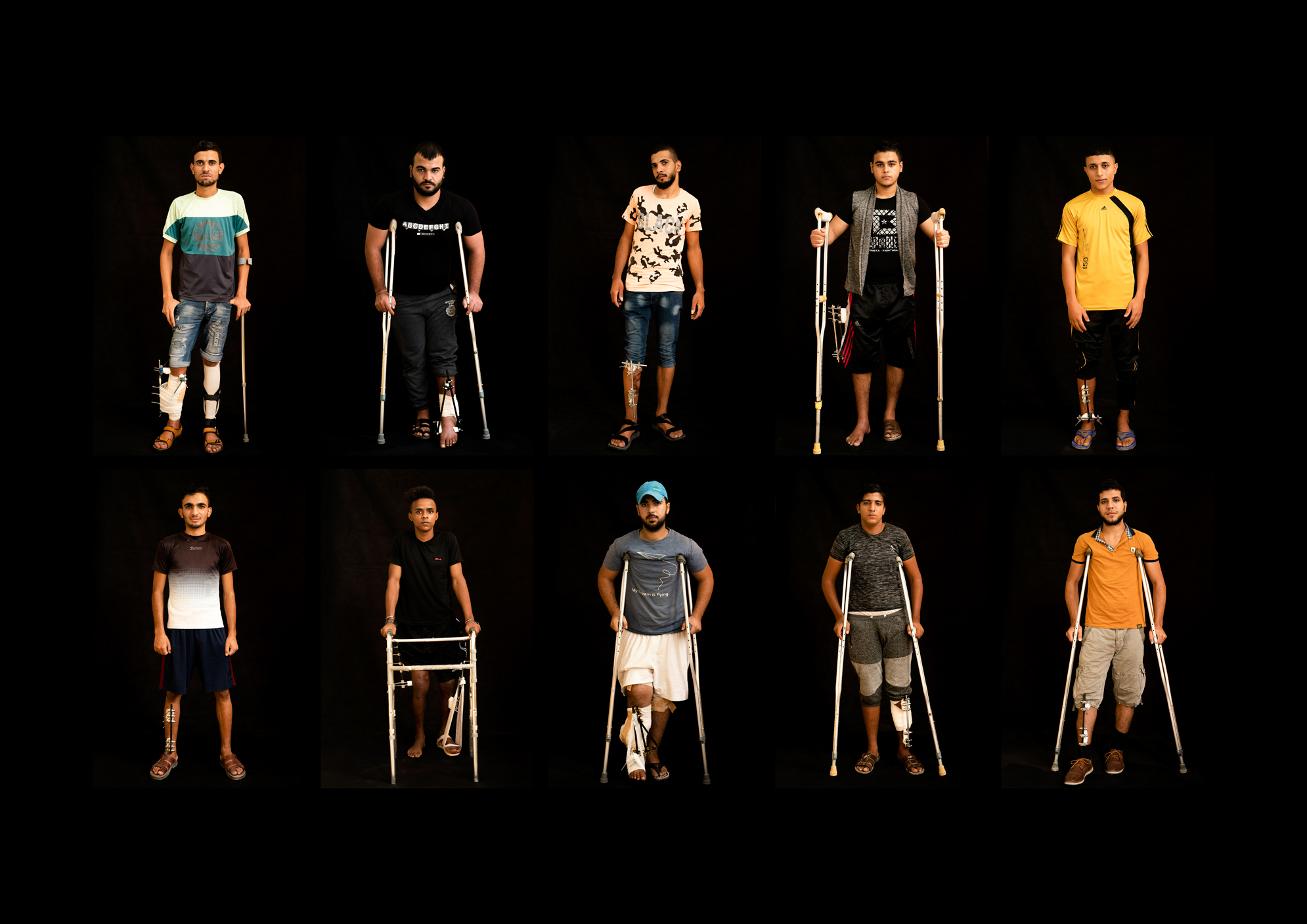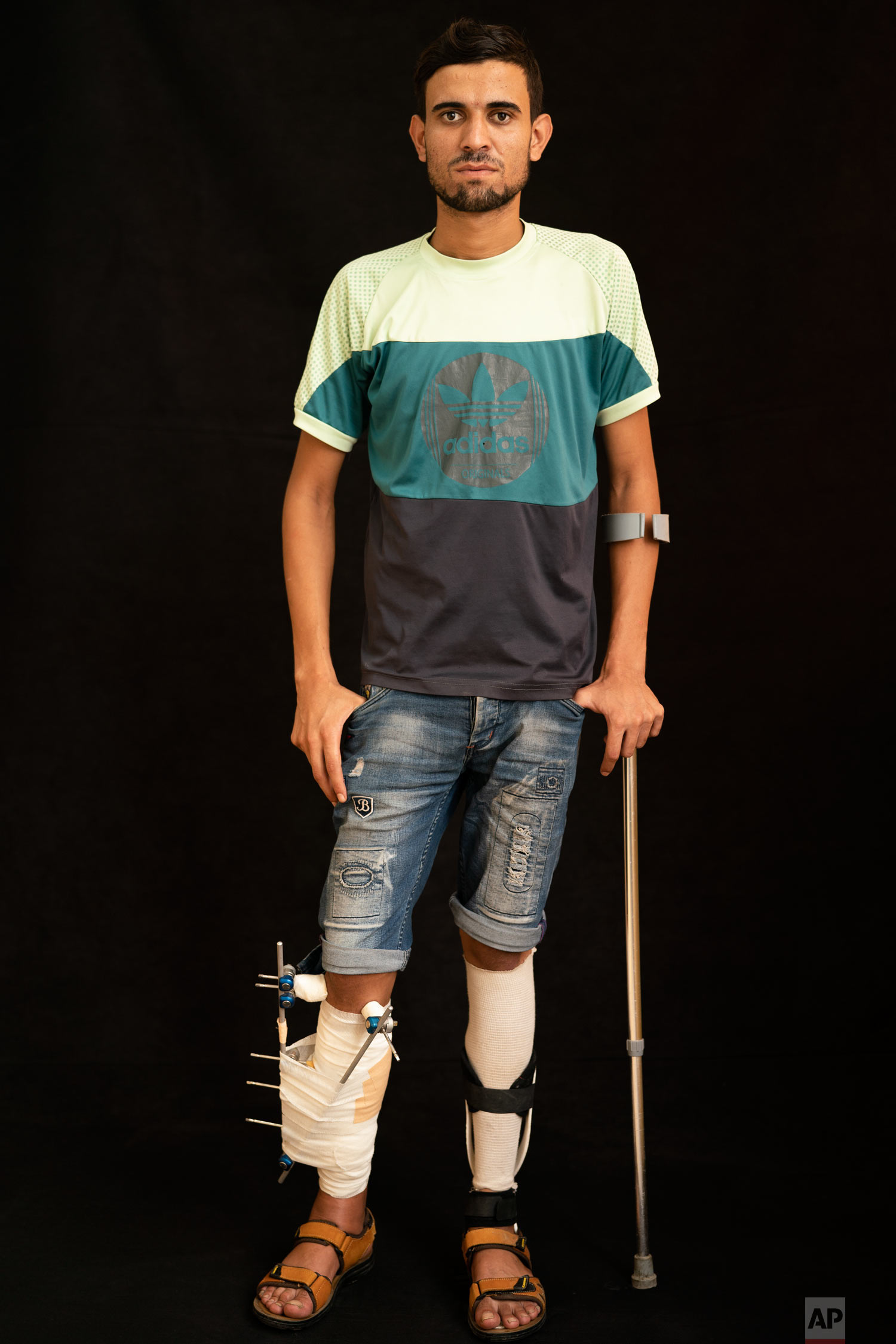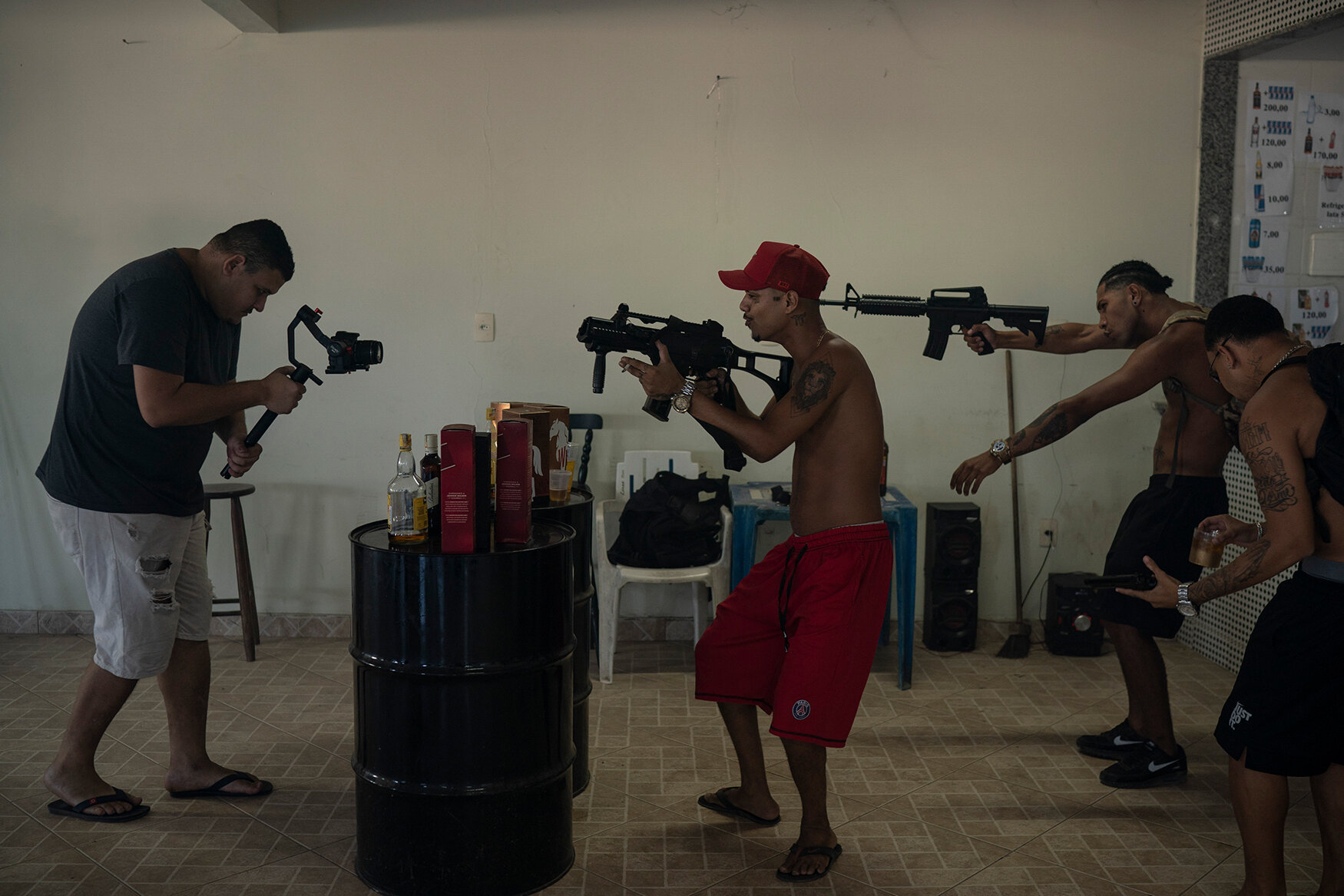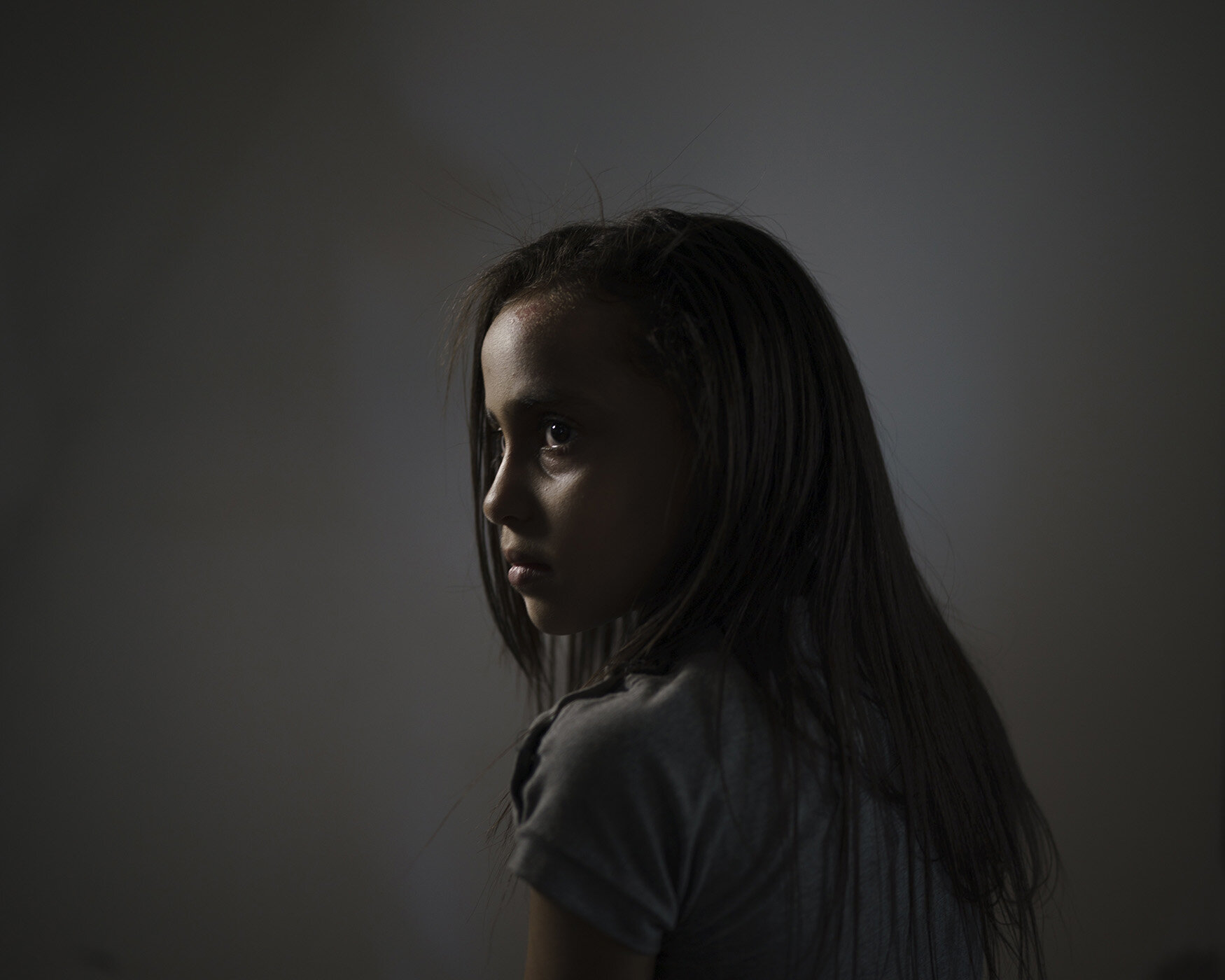Portraits of the wounded

Israeli forces deployed along the volatile border with the Gaza Strip have fired live rounds at rock-throwing Palestinian protesters ever since demonstrations against Israel’s long-running blockade of Gaza began in March.
And for eight months, Israeli snipers have targeted one part of the body more than any other _ the legs.
The Israeli response to what it views as weekly terror attacks along the frontier appears aimed at disabling, rather than killing, those who approach the fence.
Still, 175 Palestinians have been shot to death, along with one Israeli soldier, according to an Associated Press count, and the number of wounded has reached colossal proportions.
Of the 10,511 Palestinians who treated at hospitals and field clinics in Gaza so far, at least 6,392, or roughly 60 percent, have been struck in the lower limbs, according to Gaza’s Health Ministry; at least 5,884 of those casualties were hit by live ammunition. Others have been hit by rubber-coated metal bullets and tear gas canisters.
The upsurge in casualties has left a visible mark on Gaza that will likely remain for decades to come. It is now common to see young men walking through dilapidated streets on crutches. Most have legs bandaged or fitted with a metal frame called a fixator, which uses pins or screws that are inserted into fractured bones to help stabilize them.
The wounded can often be seen on the way to treatment at a clinic run by the Paris-based medical charity Doctors Without Borders in Gaza City, where Associated Press photographer Felipe Dana took portraits of some of them.
Many acknowledged throwing stones toward Israeli troops during the demonstrations. One said he had hurled a firebomb. But one, a paramedic, had gone to the protests to help rescue others, while another said he was merely waving a Palestinian flag, while another said he was selling coffee and tea.
Doctors Without Borders said this month that the huge number of patients were overwhelming Gaza’s health-care system, which has already been severely weekend by a blockade imposed by Israel and Egypt that has fueled economic stagnation and rampant unemployment, and devastated water and electricity supplies.
The Paris-based aid group said the majority of the 3,117 patients it has treated have been shot in the legs, and many will need follow-up surgery, physiotherapy and rehabilitation.
“These are complex and serious injuries that do not quickly heal,” the group said. “Their severity, and the lack of appropriate treatment in Gaza’s crippled health system, means that infection is a high risk, especially for patients with open fractures.”
“The consequences of these wounds ... will be lifelong disability for many,” the aid group said. “And if infections are not tackled, then the results could be amputation or even death.”
Gaza’s Health Ministry says it has carried out 94 amputations since the protests began, 82 of them involving lower limbs.
Ayman Harb, 36
Harb, a paramedic was injured several times. In the last protest, he was shot while trying to help someone get out of the Mediterranean.
Mahmoud, 19
Mahmoud says he lost about 10 centimeters (four inches) of bone from his injuries and is far from recovery five months later.
Mohanad al-Khawas, 20
Mohammed Hilles, 18
Al-Khawas, left, was selling coffee and tea from a push cart at a protest when he was shot in the right leg; he says he was trying to coax his nephew to leave the site.
Hilles, right, says he was on the border chatting with other youths when he was shot in the abdomen and in the right leg. He wants to keep on protesting.
Fathi al-Sakani, 19
Al-Sakani was taking part in a protest when he was shot in his right shin.
Mohammed al-Eissawi, 24
Al-Eissawi says he was throwing rocks with a slingshot when he was shot in the leg several times. He has been protesting for five years and has been injured many times. He says that he is not afraid and will continue to take part in protests.
Hassan Abu Houdi, 19
Mohamed al-Rafati, 24
Houdi, left, says he was shot in his right leg while protesting.
Al-Rafati, right, said he was resting between burning tires during a demonstration when he was shot. He still joins other protesters every Friday.
Mahmoud Saad, 25
Saad says he was throwing rocks while at the border when he was shot in his left leg.
Mohammed Afana, 20
Afana hopes to be able to walk normally again.
Mohammed Shabit, 26
Ahmed Subeih, 24
Shabit, left, says he suffered two fractures of the left leg while marching with demonstrators during a peaceful protest at the border.
Subeih, right, was throwing rocks at the protest when he was shot; he believes what happened to him was "God's decision."
Abdel-Fattah al-Khatib, 19
Al-Khatib was shot in the leg by a soldier when he came close to the fence at the protest site.
Ahmed Abu Marahil, 20
Marahil was shot as he made his way towards a fence at the protest site.
Text from the AP news story, In Gaza protests, Israeli troops aim for the legs, by Todd Pitman.
Photos by Felipe Dana



















